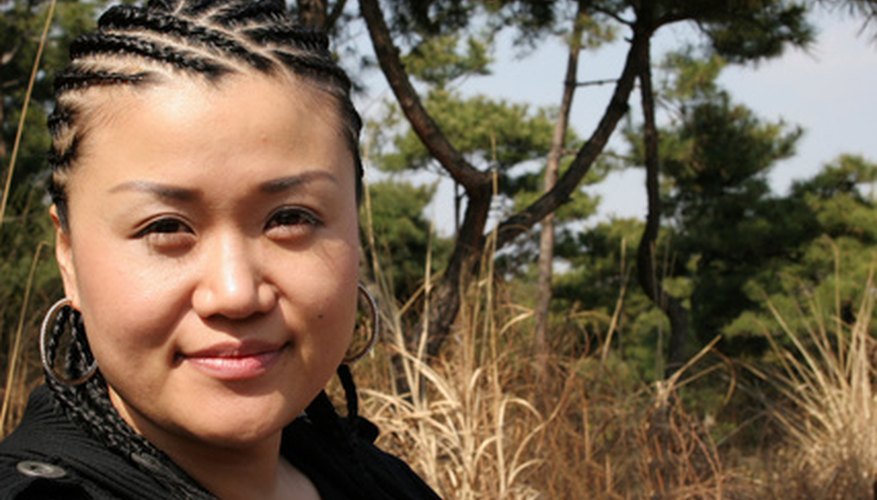Scalp braids are plaited directly onto the scalp. They are usually intricate and some can take many hours to complete, although once done they can last up to six weeks with careful maintenance. Off-the-scalp braids differ from scalp braids because they are plaited away from the scalp and often start at the nape of the neck. There are two main types of scalp braid: three strand (these types of braids or plaits use three strands of hair that are closely woven to the scalp) and two strand (these types of braid use two strands of hair and are again created close to the scalp). Each of these types consist of hundreds of unique styles. Men, women and children are all able to wear varieties of scalp braids. With origins in ancient Africa, many countries now have their own take of this popular and practical style.
Cornrow ( or Track Braids)
Cornrows can be woven in an under or over manner, depending on the desired effect. Although they are the most intricate of the three stranded braids, cornrows are also the most versatile and can be plaited into many complex designs and styles, such as diagonal, zigzag, spiral, crossover (waffle) and even Mohawk patterns. Hair extensions and coloured pieces can also be added to the braids for a more dramatic look.
Dutch Braids
Dutch braids use three larger strands of hair that are crossed under each other in order to make a rope-like design. Usually these plaits run as one large braid from the hairline to the ends of the hair. Although, it is possible to part the hair in two for a pigtail effect or even to work around the head, forming a striking crown design.
French Braids
French Braids typically use three larger strands of hair crossed in an over or inverted pattern. Similar to the Dutch braid in style, this type of plait also lends itself to pigtail and crown designs.
Fishtail Braids
This type of two-strand braid uses strands that are crossed one over the other and pulled tightly once each section is crossed. These strands have to be very even in size to emphasise the desired pattern effect, which usually resembles a fish skeleton. There are variations on this type of braid including fishbone braids and herringbone braids, each of which are very similar and so are usually depicted by the size of the strand.
Twist Braids
Twist braids take two strands of hair and twist them around each other, providing a spiral effect. These types of braids can be done in many designs, including an interesting style that twists hair from the nape of the neck upwards, producing a beautiful pile of hair on the crown which can then be plaited further, curled or tied into a bun.
Tips.

In order for any braid to be a true scalp braid, you will need to start plaiting at the hairline or crown of the head.
Hair must be at least 2 inches long in order to obtain lasting, neat results.
Various braid sprays and products can be purchased; however, it is advised not to use anything too moisturising because it can make the braids slippery, thus reducing staying power. Also, in order to maintain the style for longer, secure the ends of flyaway or straighter hair with snag-free elastic bands and cover hair with a scarf for sleeping.
- In order for any braid to be a true scalp braid, you will need to start plaiting at the hairline or crown of the head.
- Also, in order to maintain the style for longer, secure the ends of flyaway or straighter hair with snag-free elastic bands and cover hair with a scarf for sleeping.
